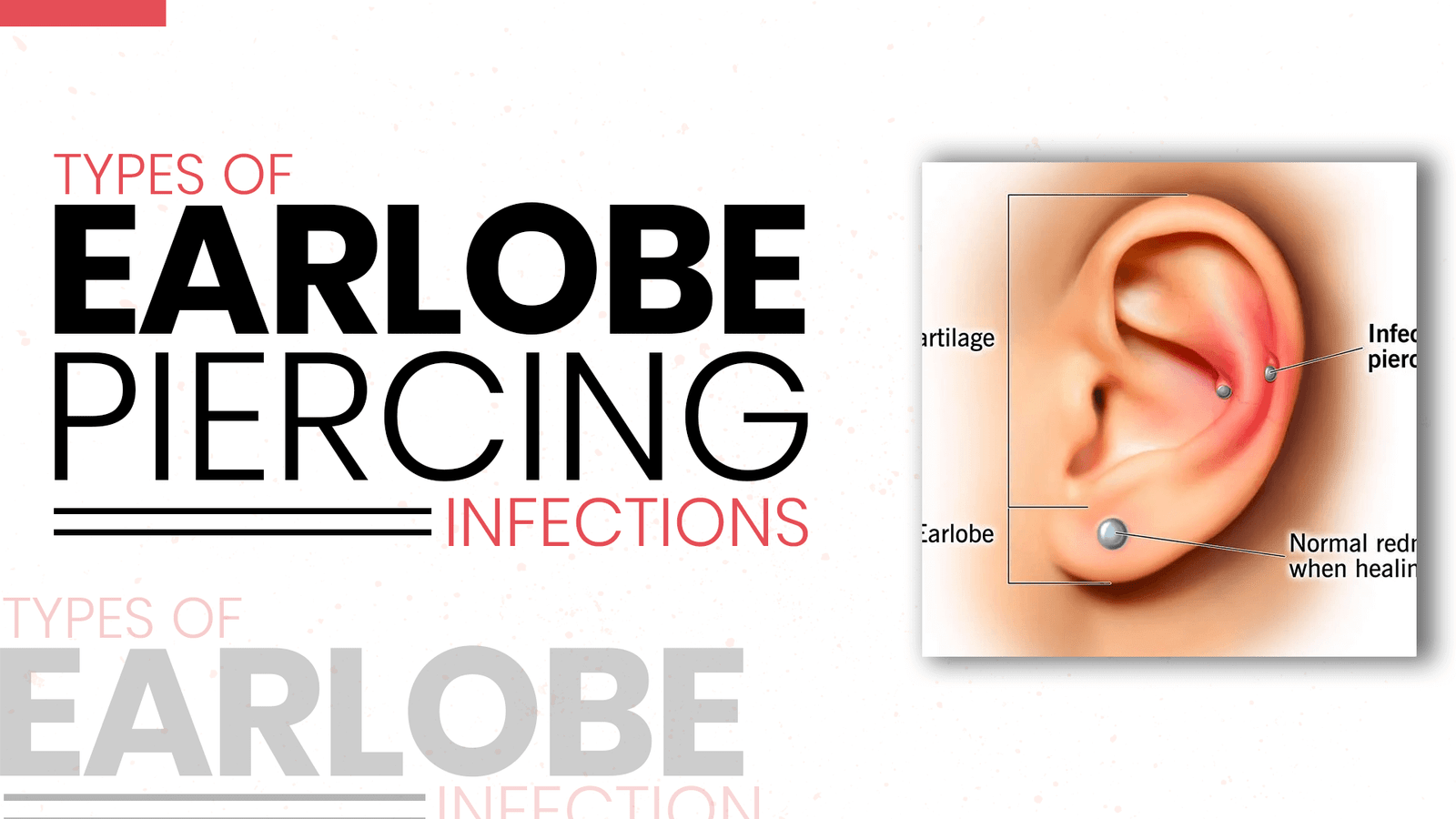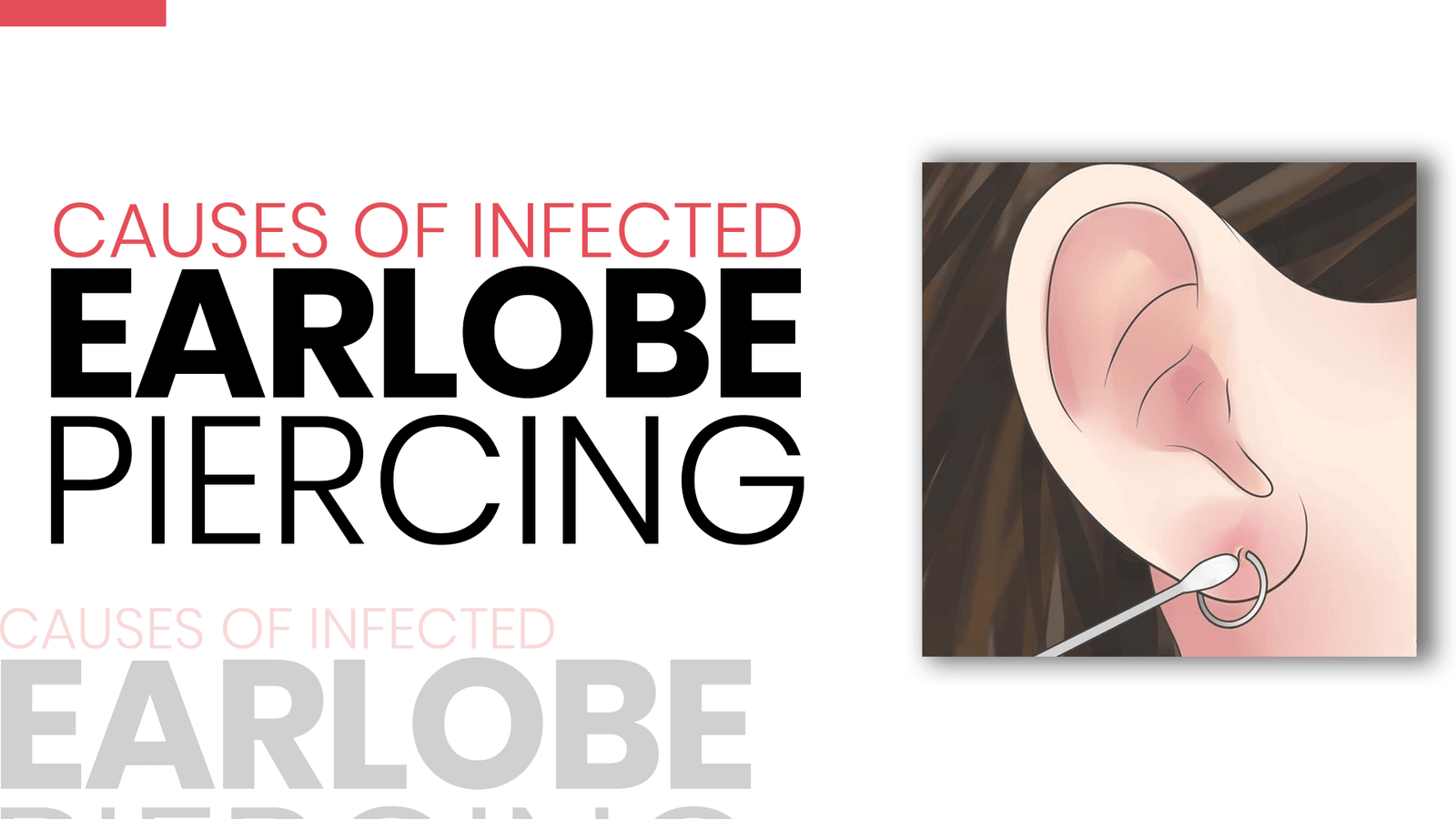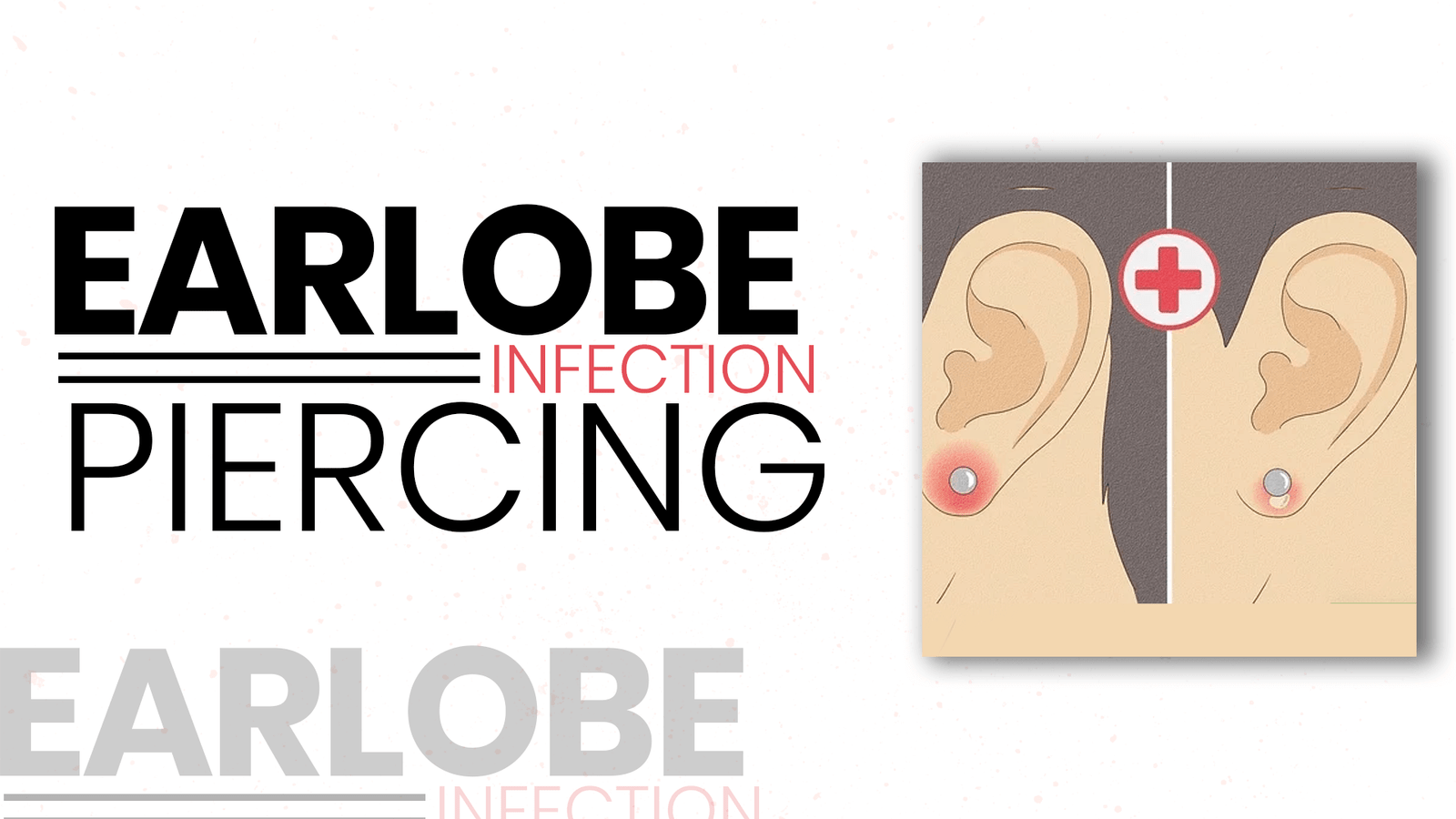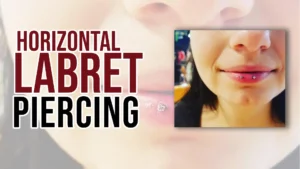Introduction to Earlobe Infection Piercing
The soft tissue at the base of the earlobe is punctured during earlobe piercing, a widespread body modification, to make room for jewelry. Although earlobe piercings are typically risk-free and secure, they can occasionally result in earlobe infection piercing, which can be uncomfortable and have significant consequences.
Infection may develop when the piercer damages the skin during the piercing procedure or when the region around the piercing is not adequately cleaned and cared for. An infected pierced earlobe may exhibit redness, swelling, soreness, discharge, and fever. An infection may occasionally need medical treatment to treat and avoid subsequent consequences effectively.
The most incredible method to guarantee a secure and effective earlobe piercing is to avoid an infection in the first place. You can accomplish this by selecting a reputable piercer who uses sterile instruments and adheres to adequate hygiene standards. It can also be achieved by carefully following the aftercare instructions and avoiding excessive touching or playing with the piercing.
If an infection does develop, timely care and treatment can reduce discomfort and stop the infection from spreading or leading to more severe health problems. Earlobe piercings can be a safe and fashionable way to show one’s individuality and give their appearance a touch of personal flair if treated with the appropriate care and attention.
Common Locations for Earlobe Piercings
Your earlobes and the cartilage of your ear are the two primary locations for ear piercings.
- Your earlobes have a healthy blood supply and are thick and fleshy. They recover rapidly, lowering the chance of infection from an earlobe piercing.
- Your upper ear is made of cartilage, a dense, rigid tissue that receives less blood. Infections in the upper ear can occasionally be hazardous and are more prone to occur with piercings there.
Types of Earlobe Piercing Infections

After obtaining a new ear piercing, infections around the piercing are common. Various infections caused by earlobe piercings include the following:
- This kind of infection is typically limited to the vicinity of the piercing. There may be pus or drainage, and the skin may become sore, swollen, and red.
- A systemic infection is when germs or a virus spreads throughout the body. Fever, chills, nausea, vomiting, and exhaustion are possible symptoms.
- When the body overproduces collagen in reaction to the harm brought on by the piercing, hypertrophic scarring results, scar tissue has the potential to be elevated and might itch or hurt.
- A keloid scar is a raised, thick, and frequently discolored scar that develops when the body creates excessive collagen.
- Some individuals may experience allergic responses to the metal used in their earrings. Redness, itching, swelling, and even blistering are possible symptoms.
It’s critical to seek medical assistance immediately if you think you could develop an infection from your earlobe piercing. You can use antibiotics, antihistamines, or even earring removal as treatments. You may require surgical intervention in extreme circumstances.
The appearance of Infected Earlobe Piercing
The typical healing process for pierced ears includes some pain and redness. It is simple to mistake individuals exhibiting infection symptoms. It’s not always infectious if the rear of the ear piercing lumps. Granulomas, which are little bumps, can occasionally develop near the piercing. By compressing them with warm water, you can treat these lumps, which are trapped fluids.
Symptoms of Infected Earlobe Piercing
Symptoms like these indicate an infection in your ear piercing:
- Your piercing is leaking fluid.
- Fever
- Swelling, heat, or redness surrounding your piercing.
- Sensitivity in the cartilage or lobe of your pierced ear.
- Removing your earrings before the healing of your piercing.
Causes of Infected Earlobe Piercing

Infection may result from microorganisms getting into a fresh piercing. You could make your new piercing vulnerable to dangerous pathogens by:
- Getting your ears pierced in an unclean setting or with unsterile tools.
- Using filthy hands to touch your ears.
- Removing your earrings before the healing of your piercing.
- You need to clean your new piercing daily.
- Before your piercing is healed, avoid swimming or immersing your head in a pool, hot tub, lake, or river.
Potential Risk Factors for Infected Earlobe Piercing

Various factors can impact your chances of developing an infection from an ear piercing. The immune system in your body and its capacity to fight infection can both be affected by specific medical problems. These circumstances include:
- Heart problems.
- Immune system impairment.
- Diabetes.
Consult with your doctor about the safety of getting a piercing if you use steroids or blood thinners.
Complications of Infected Earlobe Piercing
An abscess (a swollen area filled with pus) or a more severe illness may arise from not treating an infected piercing. Infected upper ear piercings are more common. These infections, if untreated, can result in perichondritis, a disease. A systemic infection can spread throughout your body. In some circumstances, your piercing may seal up as a result of an infection.
Diagnosis of Earlobe Infection Piercing
You should contact a medical professional if you notice symptoms of an infected cartilage piercing. The healthcare provider can judge how severe the infection is. Take extra precautions with your cleanliness if your earlobe piercing may be infected. Contact a professional if the infection becomes more powerful.
Treatment of Earlobe Infection Piercing
A medical professional can advise you on how to treat an infected ear piercing. To assist in the recovery of an infected ear piercing, they may suggest some treatments. Treatment options for ear piercing infections include:
- Putting a warm compress on the cartilage or earlobe that is infected.
- The infected ear piercing should be cleaned with a sterile saline solution.
- Applying an antibiotic cream to the infected region.
- You can also take oral antibiotics for more severe infections.
Prevention of Earlobe Infection Piercing
Properly caring for your body jewelry is the best way to avoid infection. You ought to:
- Until the piercings are entirely healed, which could take up to six weeks, keep your earrings on throughout the day and night.
- Before touching the cartilage or earlobes, wash your hands.
- Use a gentle soap or cleanser to wash your piercing twice a day.
- Rinse your piercing thoroughly after cleaning it.
- Rub alcohol or antibiotic cream twice daily on the afflicted area.
- After lubricating the piercings with petroleum jelly or antibiotic ointment, gently rotate your earrings daily.
Conclusion
In conclusion, people with this common body alteration may face painful and irritating earlobe piercing infections. However, you can reduce the risk of infection with appropriate care and attention to hygiene. Regular cleaning, refraining from touching or playing with the piercing, and waiting until the wound has fully healed before changing or removing the jewelry are all crucial.
If you have an infection, getting medical care right away will help you avoid subsequent problems. Infection commonly manifests as redness, swelling, drainage, and ongoing pain. Antibiotics would be required to treat the infection, and surgery might be needed in extreme circumstances. Even though earlobe piercing infections might be unsettling, they are typically curable; therefore, people shouldn’t let them stop them from engaging in this form of self-expression. Maintaining good cleanliness and getting medical support when required can help to guarantee a secure and satisfying piercing procedure.





